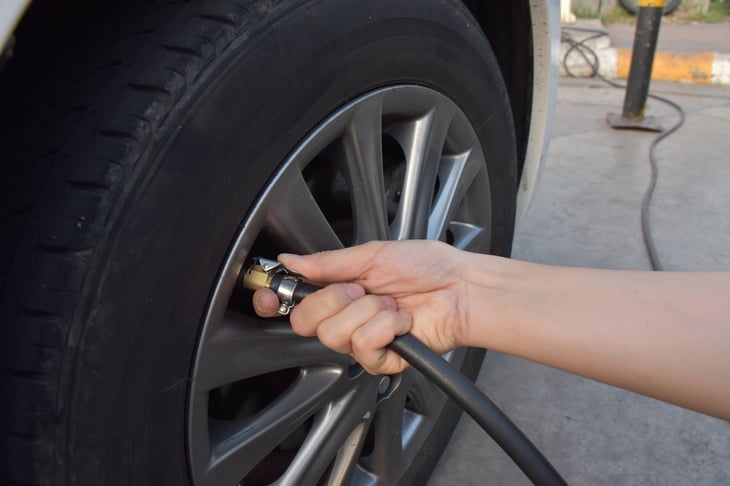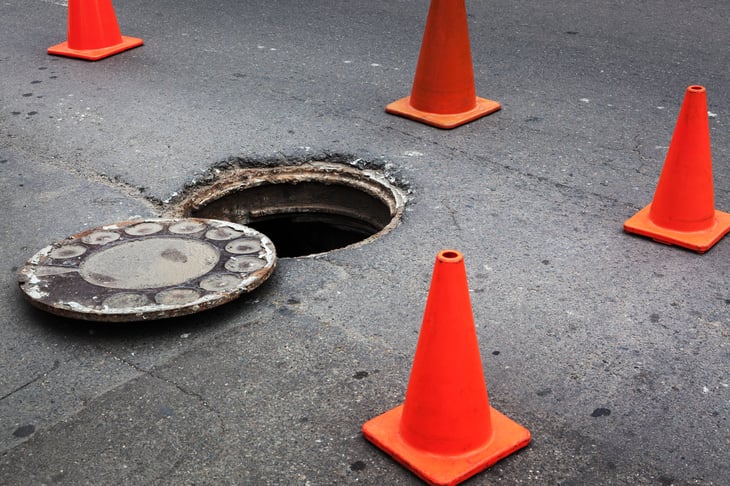
This story originally appeared on Filterbuy.
Since March of 2020, the COVID-19 pandemic has caused record numbers of Americans to transition to remote work. As COVID cases have surged across the country, recent CDC guidelines suggest that workers should be allowed to work remotely if they can. While many jobs are suitable to a remote work environment, most are not. Using data from the Census Bureau as well as a recent study by University of Chicago researchers, about 31 percent of U.S. workers are employed in remote-friendly jobs, but this varies substantially on a geographic level. Additionally, not everyone who works in an occupation that can be performed remotely is well-positioned to do so. Differences in computer and high-speed internet access, as well as available space in the household, all impact an individual’s preparedness for remote work.
Working from home typically requires both a computer and a high-speed internet connection. According to data from the Census Bureau, nearly a quarter of U.S. households don’t own a computer and close to 30 percent lack broadband internet, such as cable, fiber optic, or DSL. Not surprisingly, owning a computer and having high-speed internet tend to go hand in hand. At the state level, states where more households own computers are also home to more households with high-speed internet. On a regional level, the South is less prepared to work from home — Southern states tend to have lower rates of home computer ownership and fewer households with broadband internet.
In addition to having the necessary hardware and internet access, being able to create a clear boundary between your home life and work life can make all the difference when working from home. Having a suitable home workspace is associated with increased telework satisfaction and self-reported productivity. Workers with a spare bedroom at home will find it easier to create a dedicated workspace than those whose only option is a shared living area, such as the kitchen or dining room table. For example, while the San Francisco metropolitan area is home to a disproportionate number of laptop workers with high-speed internet access, a majority of these workers don’t have extra space for a home office, making full-time remote work more challenging in the Bay Area than in areas with more affordable housing.
To find the metropolitan areas in the U.S. most prepared to work from home, researchers at Filterbuy ranked metro areas according to their composite score. To improve relevance, only metropolitan areas with at least 100,000 people were included in the analysis.
Keep reading to learn which large metros, those with 1 million or more population, are most prepared for residents to work from home.
15. Kansas City, MO-KS

- Composite score: 81.35
- Percentage of workers in remote-friendly jobs: 32.2%
- Percentage of households with a laptop or desktop computer: 79.7%
- Percentage of households with broadband internet: 73.5%
- Percentage of households with at least one spare bedroom: 64.0%
- Median household rooms per person: 3.0
14. Pittsburgh, PA

- Composite score: 81.55
- Percentage of workers in remote-friendly jobs: 32.6%
- Percentage of households with a laptop or desktop computer: 75.8%
- Percentage of households with broadband internet: 73.5%
- Percentage of households with at least one spare bedroom: 67.2%
- Median household rooms per person: 3.0
13. Seattle-Tacoma-Bellevue, WA

- Composite score: 81.58
- Percentage of workers in remote-friendly jobs: 36.6%
- Percentage of households with a laptop or desktop computer: 87.1%
- Percentage of households with broadband internet: 82.3%
- Percentage of households with at least one spare bedroom: 57.0%
- Median household rooms per person: 2.3
12. Salt Lake City, UT

- Composite score: 81.70
- Percentage of workers in remote-friendly jobs: 34.7%
- Percentage of households with a laptop or desktop computer: 86.6%
- Percentage of households with broadband internet: 76.6%
- Percentage of households with at least one spare bedroom: 61.8%
- Median household rooms per person: 2.5
11. Tampa-St. Petersburg-Clearwater, FL

- Composite score: 81.97
- Percentage of workers in remote-friendly jobs: 31.8%
- Percentage of households with a laptop or desktop computer: 81.3%
- Percentage of households with broadband internet: 75.9%
- Percentage of households with at least one spare bedroom: 64.4%
- Median household rooms per person: 2.6
10. Columbus, OH

- Composite score: 82.01
- Percentage of workers in remote-friendly jobs: 32.9%
- Percentage of households with a laptop or desktop computer: 80.4%
- Percentage of households with broadband internet: 77.3%
- Percentage of households with at least one spare bedroom: 62.2%
- Median household rooms per person: 2.7
9. Philadelphia-Camden-Wilmington, PA-NJ-DE-MD

- Composite score: 83.32
- Percentage of workers in remote-friendly jobs: 33.9%
- Percentage of households with a laptop or desktop computer: 80.0%
- Percentage of households with broadband internet: 77.6%
- Percentage of households with at least one spare bedroom: 61.8%
- Median household rooms per person: 3.0
8. Charlotte-Concord-Gastonia, NC-SC

- Composite score: 83.36
- Percentage of workers in remote-friendly jobs: 32.9%
- Percentage of households with a laptop or desktop computer: 79.0%
- Percentage of households with broadband internet: 76.1%
- Percentage of households with at least one spare bedroom: 66.7%
- Median household rooms per person: 2.7
7. Richmond, VA

- Composite score: 83.74
- Percentage of workers in remote-friendly jobs: 33.4%
- Percentage of households with a laptop or desktop computer: 78.1%
- Percentage of households with broadband internet: 70.4%
- Percentage of households with at least one spare bedroom: 70.9%
- Median household rooms per person: 3.0
6. Baltimore-Columbia-Towson, MD

- Composite score: 84.48
- Percentage of workers in remote-friendly jobs: 35.9%
- Percentage of households with a laptop or desktop computer: 81.4%
- Percentage of households with broadband internet: 75.6%
- Percentage of households with at least one spare bedroom: 63.3%
- Median household rooms per person: 3.0
5. Denver-Aurora-Lakewood, CO

- Composite score: 85.40
- Percentage of workers in remote-friendly jobs: 35.8%
- Percentage of households with a laptop or desktop computer: 86.1%
- Percentage of households with broadband internet: 80.6%
- Percentage of households with at least one spare bedroom: 61.5%
- Median household rooms per person: 2.7
4. Minneapolis-St. Paul-Bloomington, MN-WI

- Composite score: 85.67
- Percentage of workers in remote-friendly jobs: 35.1%
- Percentage of households with a laptop or desktop computer: 83.8%
- Percentage of households with broadband internet: 77.1%
- Percentage of households with at least one spare bedroom: 63.3%
- Median household rooms per person: 3.0
3. Washington-Arlington-Alexandria, DC-VA-MD-WV

- Composite score: 85.72
- Percentage of workers in remote-friendly jobs: 38.1%
- Percentage of households with a laptop or desktop computer: 87.6%
- Percentage of households with broadband internet: 82.7%
- Percentage of households with at least one spare bedroom: 58.8%
- Median household rooms per person: 2.7
2. Atlanta-Sandy Springs-Alpharetta, GA

- Composite score: 86.99
- Percentage of workers in remote-friendly jobs: 35.0%
- Percentage of households with a laptop or desktop computer: 82.8%
- Percentage of households with broadband internet: 76.8%
- Percentage of households with at least one spare bedroom: 65.6%
- Median household rooms per person: 3.0
1. Raleigh-Cary, NC

- Composite score: 87.69
- Percentage of workers in remote-friendly jobs: 35.9%
- Percentage of households with a laptop or desktop computer: 84.6%
- Percentage of households with broadband internet: 78.6%
- Percentage of households with at least one spare bedroom: 66.0%
- Median household rooms per person: 2.7
Detailed Findings & Methodology

The Raleigh, North Carolina, metro area ranks as the most prepared large metro to work from home. Nearly 36 percent of Raleigh workers are employed in remote-friendly jobs, over 5 percentage points higher than the national level. A large proportion of Raleigh households have computers and high-speed internet, and 66 percent have at least one spare bedroom, meaning most households have space for a home office. Other large metros that are most prepared to work from home rank highly in all or most of the composite score factors.
The small and midsize metros that are most prepared to work from home are scattered across the country, with many of these metros on the East Coast or in the Midwest and West. These metros have a higher-than-average number of workers in remote-friendly jobs and tend to have large percentages of households that have computers and broadband internet. While 60 percent of households in the U.S. have a spare bedroom, closer to 70 percent or more of households in some of the small and midsize metros most prepared to work from home have spare bedrooms that could be used as home offices.
To find the metros in the U.S. most prepared to work from home, researchers at Filterbuy analyzed data from the U.S. Census Bureau’s 2019 American Community Survey and 2019 American Community Survey Public Use Microdata Sample (ACS PUMS) and a novel dataset from a recent study on remote-friendly occupations. The researchers created a composite score based on the following factors:
- Percentage of workers in remote-friendly jobs: the share of workers employed part- or full-time in 2019 in occupations that can be done from home
- Percentage of households with a laptop or desktop computer: the share of households that own at least one laptop or desktop computer
- Percentage of households with broadband internet: the share of households with a high-speed internet subscription, such as cable, fiber optic or DSL
- Percentage of households with at least one spare bedroom: the share of households that have an extra bedroom, offering the possibility of a home office
- Median household rooms per person: median number of rooms in households (including bedrooms, living areas, kitchens) per person
Metro areas were ranked according to their composite score. Additionally, metros were grouped into the following cohorts based on population size:
- Small metros: 100,000–349,999
- Midsize metros: 350,000–999,999
- Large metros: 1 million or more
Disclosure: The information you read here is always objective. However, we sometimes receive compensation when you click links within our stories.














































